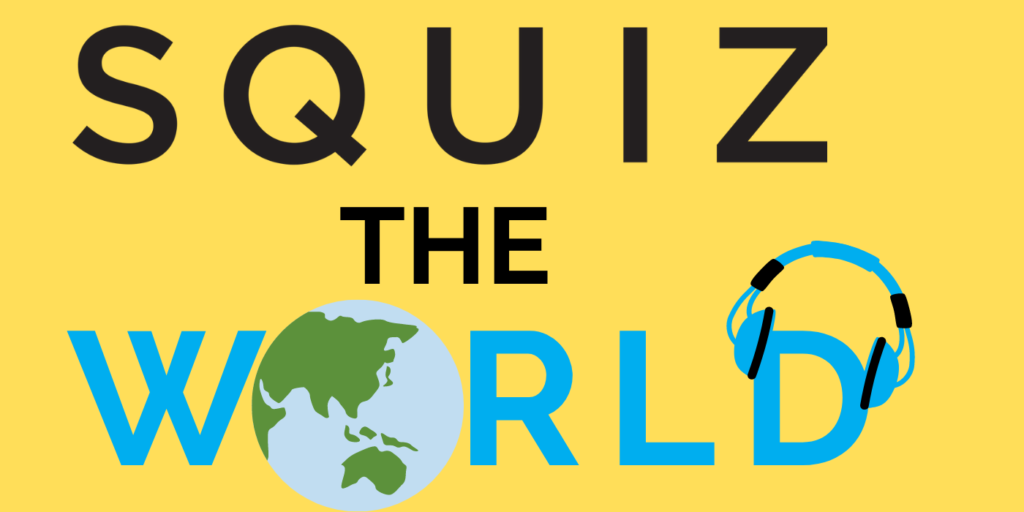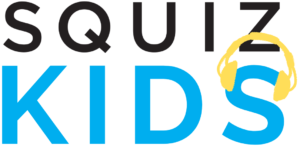
Squiz the World goes to… Indonesia
LINKS:
All About Komodo Dragons: https://nationalzoo.si.edu/animals/komodo-dragon
Watch Komodos hunting in the wild: https://www.youtube.com/watch?v=QaVkZ7BP-i8
Tumpeng recipe: http://fndrecipes.blogspot.com/2011/03/nasi-tumpeng.html
EPISODE TRANSCRIPT
Each week, we give the world globe a spin, and see where we land. Then we take the kids of Australia on an audio excursion to visit that country and its people.
I’m Amanda Bower, and today on Squiz the World we’re visiting one of our closest neighbours—Indonesia. The western half of the island that Papua New Guinea is on belongs to Indonesia, and it’s only about 200km across the Torres Strait .. where there are some pretty big sharks and crocs … to get to Australia.
But the northernmost part of Indonesia is thousands of kilometres away. That’s because Indonesia is the world’s biggest archipelagic country… an archipelago being a collection of islands. It’s also to the world’s most populous Islamic country – most populous meaning the most people. So, strap yourselves into the Squiz Kids Super Fast Supersonic Jetliner as we take off and take a squiz at Indonesia.
JUST THE FACTS
Indonesia is a collection of more than 17,000 islands, and, like Australia, the Pacific Ocean is to the east, and the Indian Ocean to the west.
The capital, Jakarta, is on the island of Java, and 9 million people call it home – more than in the whole of New South Wales!
Altogether more than ten times as many people live in Indonesia than in Australia – we have 25 million, and they have 275 million. Let me say that again: 275 million people live in Indonesia …. That is a LOT of people, and there are thousands of different ethnic groups.
But Indonesia has a motto – “Bhinneka Tunggal Ika” – which means “many, yet one”. What they’re saying is that yes, it is an extremely diverse country, but it’s unified. And the thing that really unified Indonesia was its fight for independence.
Let’s get into the Squiz Kids time machine to learn more. Way back in 1512, the first Europeans came to Indonesia. They were Portuguese traders, who wanted to make their fortunes selling the delicious nutmeg, cloves, and pepper found in Indonesia. Spices, of course, are what make food tasty—but not many grew in Europe. The Portugese ships and traders were followed by the Dutch and British, and by 1602, the Dutch basically had control over Indonesia. It stayed that way for more than 300 years.
When World War II came along, in the 1940s, Japan invaded, and the Dutch fled. In 1945, just two days after Japan surrended in the war, Indonesians saw their chance to get rid of foreign rulers, and declared independence for Indonesia. Independence for a country means they rule themselves – they create their own laws, they run the country the way they want to run it.
The Dutch weren’t so keen, and it took four years of fighting – with words and with guns – until the Dutch agreed. And those four years of struggle really united Indonesians. Nowadays, every August 17, they celebrate their Independence Day.
Whenever you travel, it’s important to learn a few words in that country’s language. It’s a great way to show respect. So, let’s….
LEARN THE LINGO
More than 700 languages are spoken in Indonesia, but the official language is called Bahasa Indonesia, and although some kids start school speaking in their first languge, by year 3, Bahasa Indonesian is pretty much the only language used to teach in school.
We’ve got our friend Gloria here to teach us some Indonesian… she recorded this video standing next to a gorgeous beach! Lucky thing.
(audio)
Terima kasih to you, Gloria! Now that we can communicate a little bit, it’s….
TIME FOR SCHOOL
The Indonesian education system is the fourth largest in the world with more than 50 million students, 3 million teachers, and 300,000 schools. Imagine that – almost twice as many kids go to school in Indonesia, as people live in Australia!
Although almost 90 per cent of all Indonesian people are Muslim, most kids go to regular public schools – only about 15 per cent attend special Muslim religious schools.
Most schools in Indonesia are pretty old fashioned – kids spend a lot of time memorising things off by heart. Teachers don’t usually ask individual kids questions… they just read something aloud and get all the kids, speaking together, to fill in the _________.
Yep, that’s right, fill in the blanks.
The thing I found the most fascinating about school in Indonesia is how kids in those remote islands get there… some have to row across rivers, or paddle in home made canoes… and sometimes the water has poisonous snakes or crocodiles! Makes the four block walk to my primary school seem very tame.
When people visit Australia, there are things they find AMAZING that we might take for granted. Like our unique wildlife! And I think you’ll be amazed by what we can find in Indonesia…
BELIEVE IT OR NOT
What would you say if I told you that there were dragons on 5 of Indonesia’s 17,000 islands?
It’s really true! They’re called Komodo dragons… although if you want to be a nitpicking scientist about it, they’re really the world’s largest species of lizard.
Can you hold out your arms and measure one metre? If you’re a netball player, it’s pretty close to the three feet you have to stay away when you’re defending someone.
Well, adult Komodo dragons can reach up to 3 meters in length. They have a powerful tail… large claws… and serrated teeth. You might remember from science lessons that carnivorous animals – those that eat meat – have serrated teeth. And Komodo dragons like to dine on deer and pigs, which they ambush alongside trails. They’ll also snack on birds and smaller mammals… and in case you were wondering, yes, they have been known to attack and eat humans.
I know – this is one of those situations where you definitely want to follow all the directions of the locals, to stay safe! And actually, locals say that Komodo dragons are shy creatures that will avoid encounters with humans when they can.
About 2,500 dragons exist in the wild, on the island of Komodo – that’s how they got their name – and four others. But I’ve popped a couple of video links into your episode notes, so that you can see them for yourselves.
Okay, I think it’s time to head inside to safety and sustenance! I think it’s…
DINNER TIME
As you can imagine, what you eat in a country with more than 17000 islands and 700 languages probably depends a lot on where you ARE in that country. But actually, in 2014, the Indonesian ministry of tourism decided that it would name an official national dish of Indonesia—they really do like this concept of unity.
The dish is called tumpeng, and not only does it taste great, it LOOKS amazing – there’s rice cooked with spices, which is then shaped to look like a volcano, and placed in the middle of a big platter. Surrounding it are a whole lot of other Indonesian dishes, which bring together different cuisines from different islands: vegetables, grilled chicken, sweet and spicy fried beef, anchovy with peanuts, shredded omelette, corn fritters… and much, much more.
I’ve put a recipe in episode notes – you and your family may not have the stamina to cook ALL of the surrounding dishes, but wouldn’t it be fun to make that rice and shape it like a volcano?
THE S’QUIZ
This is the part of the podcast where you get to test how well you’ve been listening.
Question 1. What’s the name for a collection of islands? Indonesia is the biggest in the world.
Question 2. Which country wanted to take back control of Indonesia after World War II?
Question 3. Name one of the big mammals we mentioned that Komodo dragons like to eat.
